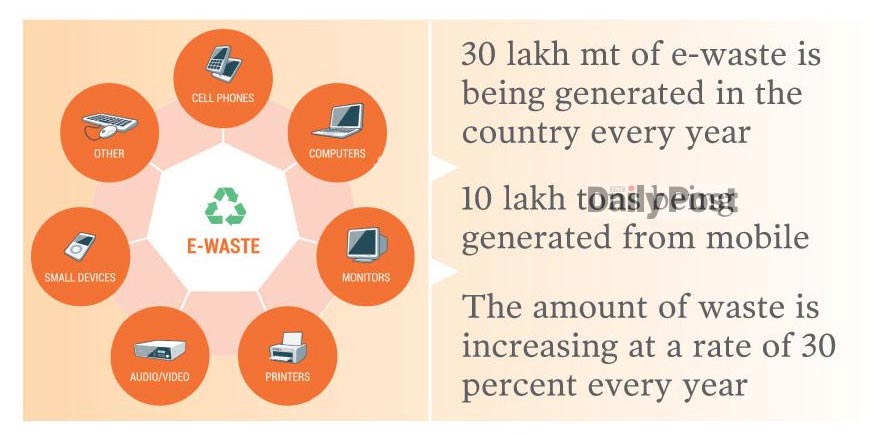# 30 lakh mt of e-waste is being generated in the country every year
# 10 lakh tons of e-waste is being generated from mobile sets alone
# The amount of waste is increasing at a rate of 30 percent every year
E-waste is increasing every day in the country. In the last few years, the use of technology has increased 30 to 40 times. After using this technology, it is being thrown in the dustbin. As a result, they are mixing with the soil and polluted the environment as well as harm to human body.
Not only Bangladesh, all Asian countries are in crisis with e-waste. Health risks and environmental pollution are increasing every day. The concerned said that the way to avoid this danger is the safe management and recycling of e-waste.
E-waste is becoming a major threat to environmental pollution. This toxic waste is harming the environment on the one hand, on the other hand, human health is also being poisoned.
According to the global 'e-waste monitor report 2024', Bangladesh is one of the largest e-waste producing countries in South Asia.
Experts said that e-waste causes health problems like cancer, respiratory problems, neurological problems, hearing problems, vision loss, infant mortality, birth defects. At the same time, e-waste is also threatening the life of wildlife including air pollution, water pollution, land pollution. In this situation, the government is preparing an e-waste guideline with the help of the World Bank under the e-waste rules.
Environmentalists said that there are several methods to control e-waste. First, learn the correct way to use the instrument. Mobile, laptop and tab can be used for a long time. The emphasis should be on increasing the use of old materials. The use of multipurpose electronics devices that will do more than one thing should be increased. This will be of some benefit.
Recently, the interim government's environment, forest and climate change adviser Syeda Rizwana Hasan said that the government will implement the e-waste rules 2021 which will play an important role in electronic waste management. She also said that emphasis is being laid on reducing electronic waste.
According to industry experts, 30 lakh metric tons of e-waste is being generated in the country every year. Of this, 10 lakh tons of e-waste is being created from mobile sets alone and 1.7 lakh tons of e-waste is being generated from 2 lakh 96 thousand 302 units of damaged televisions. The amount of waste is increasing at a rate of 30 percent every year.
According to a research report titled 'E-Waste Bangladesh Situation' of Environment and Social Development Organization (ESDO), most of the e-waste dumping in the capital Dhaka is done in Islampur, Kamrangirchar, Jinjira, Mirpur 11 and 12 and Mohammadpur.
It also said that more than 50,000 children in the country are involved in the process of e-waste collection and recycling. More than 15 percent of children engaged in e-waste collection and management die. And more than 83 percent of children become ill after exposure to toxic substances.
Professor Ahmed Kamruzzaman Majumder said Bangladesh has become a landfill of e-waste. Here people change televisions, smartphones and other equipment after a few days. In the absence of any government initiative, most of the old equipment is not recycled. On the contrary, it harms the environment and health in many ways.
He also said that the rules of the Department of Environment do not include what should be done to reduce the risk of e-waste, the distribution of work of the responsible agencies and institutions, who are the guardians of the compensation seekers, the testing of imported electrical and electronic products, what should be done in the management of e-waste related to the laboratory. In addition, occupational health and safety issues of those engaged in transporting and destroying e-waste remain out of the policy.
ZH






